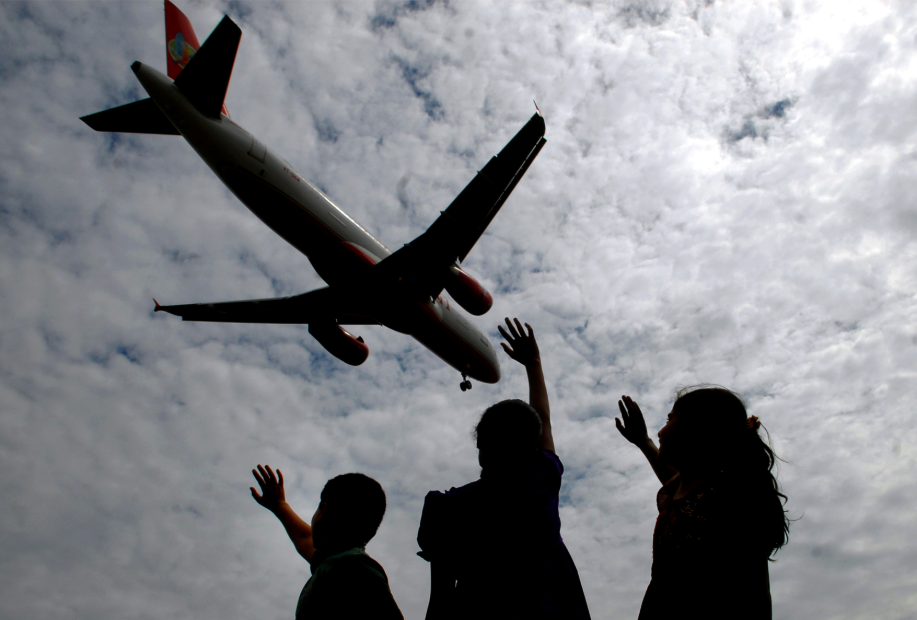
From the 3rd of May, all districts in the country were divided into red zones, orange zones and green zones based on the number of COVID-19 cases reported in these areas and lockdown measures were eased accordingly. Many questions were raised globally as to if this was the appropriate action to be taken at the time and why restrictions were being eased at a time when positive cases reported in the country were at an all-time high. Initially when the nationwide lockdown was imposed with a 4-hour advanced warning, the government underwent heavy criticism for not giving the vast population time to prepare for what was to come, and most importantly for ignoring the needs of the huge migrant population in the informal sector who work for daily wages. With no place to stay, no way to go home and no means to make ends meet a lot of them started to walk to their homes – meeting death in a myriad of ways on their way.
After nearly 6 weeks of complete lockdown which was implemented regardless of the consequences, because it was seen as the need of the hour, the government was left with little choice but to begin easing the restrictions in an attempt to save the failing economy from irreparable damage. Waiting on a cure which might or might not materialize or vaccine to prevent the disease seemed unlikely given the scenario and projected timelines of the same. The timely lockdown however, played a crucial role in buying the government ample time to prepare for the onslaught on the public health system which is seen as inevitable, by allowing them to source ventilators, personal protective equipment, rapid testing kits and N95 masks. It allowed slowing of the infection rate, thereby giving supply chains of these essential equipment a chance to meet the needs of a population of 135 crores. It also allowed the government to establish isolation wards in various parts of the country in case of an overrun of the public hospitals.
The major unintentional side effect of the lockdown was that nearly 70% of economic activity, investments, exports and discretionary consumption came to an abrupt halt and is estimated to have cost the Indian economy between 14 to 16 lakh crore rupees or more over a period of 6 weeks. The lockdown saw a shutdown of majority of factories, businesses, manufacturing units, suspended flights, stopped trains and restricted movement of vehicles and people and most severely impacted tourism, real estate, recreational, transport and retail sectors. Since the government does not currently provide any assistance to small businesses and the unemployed, the lockdown is especially hard hitting in a country like India.
Be this as it may, the number of infections has not spiked in an out of control manner but has displayed a steady increase with no signs of abating in the near future. However, as a result of all the causes stated above, India has had a more difficult time finding the balance between lives and livelihoods especially compared to the more affluent countries with more robust care packages and is no longer able to afford the luxury of keeping its’ economy in suspended animation for the sake of physical distancing. The need of the hour is to ensure a safe, phased and organized reopening of the country which will allow the economy to flourish once more and give the population their livelihoods back, while putting in place new guidelines regarding sanitation, hygiene and public transport.
Work from home options should be made mandatory in all sectors where it is a possibility and all non-essential large gatherings should be postponed until there is a drug or vaccine being offered. Public transport should be offered for essential workers while following physical distancing guidelines and respiratory hygiene etiquette. The biggest challenge the government currently faces is aiding small and medium business enterprises (especially handloom and cottage industries) to cover their overheads and stay afloat despite the crisis they’ve had to face and helping them protect labor intensive production. The government also needs to work towards helping the migrant laborers go back to work. Mahatma Gandhi National Rural Employment Guarantee Act (MGNREGA) needs to be restarted so that one of the largest employers of the daily wage laborers in India is back to being productive and this needs to be accompanied by a budgetary increase for other social sector spending such as pension and the Public Distribution System (PDS). Coverage under the National Food Security Act (NFSA) needs to be drastically scaled up to meet the needs of the population which has been jobless for the past two months and unable to afford their next meal, let alone survive this crisis.
While all of this must happen, as a country and a community we must be wary becoming carriers to the vulnerable population like the elderly and those suffering from comorbidities. Precautions must be taken both at the national level and individual level to isolate this demographic of the population and protect them from the virus, while meeting all their essential needs.
This is the post COVID-19 world that we need to be prepared for and the changes can be both drastic and long lasting. Nothing which reflects the world that we were in merely two months ago, but in the face of this adversity it is more important than ever to come together and fight the pandemic both for the sake of ourselves and the sake of others. The role of policy making and governance is more crucial now, than ever before in history and all eyes truly are on the world’s largest democracy to watch how we emerge from this situation and the pressure is immense to do so in a poised and dignified manner, minimizing casualties as much as possible.
Note: The author is a Research Associate with PLF. The views referred to here are personal and does not refer to the institutional stand on it.

Leave a Reply